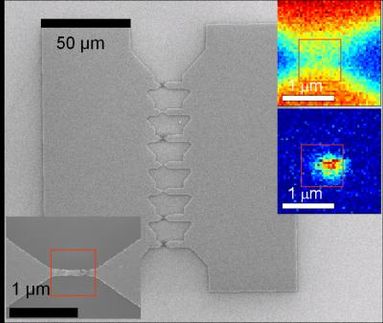'Chemical equator' discovery will aid pollution mapping
Scientists at the University of York have discovered a 'Chemical Equator' that divides the polluted air of the Northern Hemisphere from the largely uncontaminated atmosphere of the Southern Hemisphere. Researchers from the University's Department of chemistry found evidence for an atmospheric chemical equator around 50 km wide in cloudless skies in the Western Pacific. Their findings show for the first time that the chemical and meteorological boundaries between the two air masses are not necessarily the same.
The discovery will provide important clues to help scientists to model simulations of the movement of pollutants in the atmosphere more accurately, and to assess the impact of pollution on climate. The study is part of the ACTIVE project (Aerosol and Chemical Transport in Tropical Convection) funded by the Natural Environment Research Council.
Previously, scientists believed that the Intertropical Convergence Zone (ITCZ) formed the boundary between the polluted air of the Northern Hemisphere and the cleaner air of the Southern Hemisphere. The ITCZ is a cloudy region circling the globe where the trade winds from each hemisphere meet. It is characterised by rapid vertical uplift and heavy rainfall, and acts as a meteorological barrier to pollutant transport between the hemispheres.
But the new research, to be published in the Journal of Geophysical Research - Atmospheres, found huge differences in air quality on either side of the chemical equator, which was 50 km wide and well to the north of the ITCZ. The study revealed that carbon monoxide, a tracer of combustion, increased from 40 parts per billion to the south, to 160 parts per billion in the north. The difference in pollutant levels was increased by extensive forest fires to the north of the boundary and very clean air south of the chemical equator being pulled north from the Southern Indian Ocean by a land based cyclone in northern Australia.
The scientists discovered evidence of the chemical equator using sensors on a specially equipped aeroplane during a series of flights north of Darwin. At the time, the ITCZ was situated well to the south over central Australia.
Dr Jacqueline Hamilton, of the Department of Chemistry at York, said: "The shallow waters of the Western Pacific, known as the Tropical Warm Pool, have some of highest sea surface temperatures in the world, which result in the region's weather being dominated by storm systems. The position of the chemical equator was to the south of this stormy region during the ACTIVE campaign.
"This means that these powerful storms may act as pumps, lifting highly polluted air from the surface to high in the atmosphere where pollutants will remain longer and may have a global influence. To improve global simulations of pollutant transport, it is vital to know when the chemical and meteorological boundary are in different locations."
Most read news

Get the analytics and lab tech industry in your inbox
By submitting this form you agree that LUMITOS AG will send you the newsletter(s) selected above by email. Your data will not be passed on to third parties. Your data will be stored and processed in accordance with our data protection regulations. LUMITOS may contact you by email for the purpose of advertising or market and opinion surveys. You can revoke your consent at any time without giving reasons to LUMITOS AG, Ernst-Augustin-Str. 2, 12489 Berlin, Germany or by e-mail at revoke@lumitos.com with effect for the future. In addition, each email contains a link to unsubscribe from the corresponding newsletter.
























































